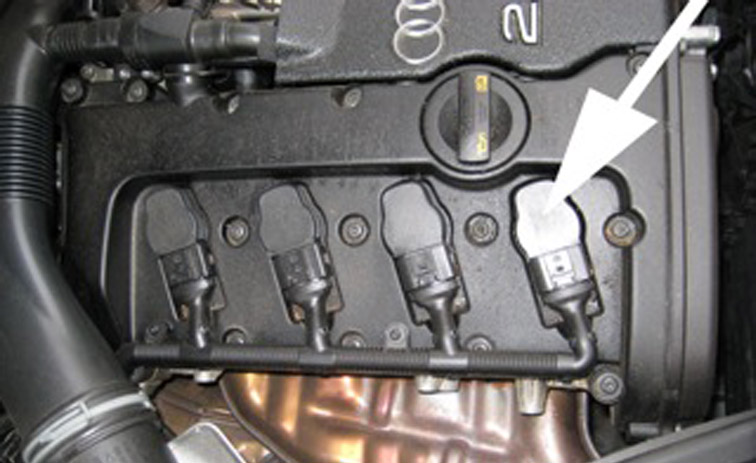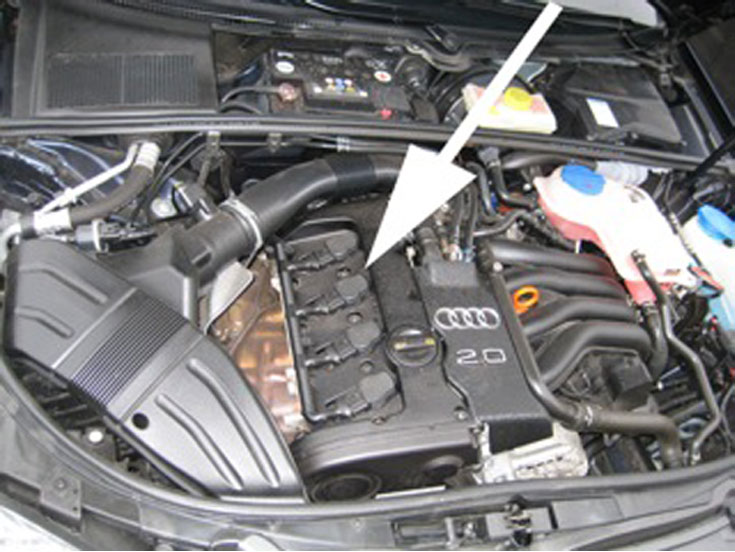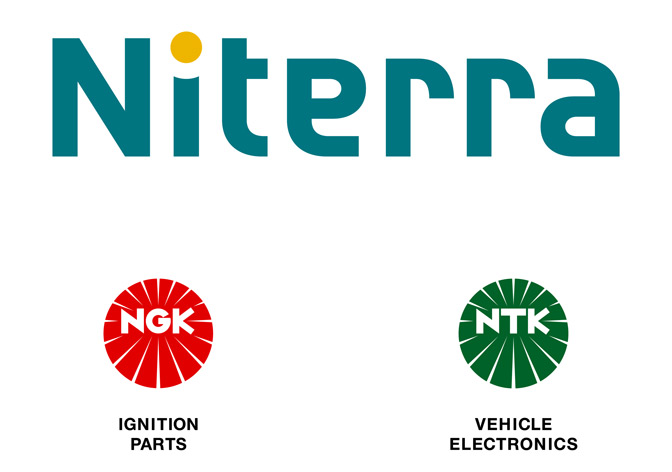Ignition coil
The ignition coil must transform the relatively low 12 V on-board vehicle voltage to the high ignition voltage required and supply the energy stored in that voltage to the spark plug. The functional principle...
Depreciation
Ignition coils are exposed to permanent mechanical and thermal stress. Their condition and function is checked as part of regular inspection and maintenance in a garage so that damage can be detected at an early stage and failure prevented.
Safety
According to annual breakdown figures collated by the ADAC, faults affecting the electrics and the ignition system continue to top the list, making up for more than half of all recorded breakdowns. On account of the continued rise in the number of electronic components and their networking via bus systems, electromagnetic compatibility (EMC) has gained significantly in importance in recent years. As as result, every electronic component must meet the following requirements:
- It must be resistant to external influencing factors under all specific operating conditions.
- It must not interfere with other electrical systems.
- During operation, it must support error-free radio reception both inside the vehicle and in the immediate surroundings.
Function
 The ignition coil must transform the relatively low 12 V on-board vehicle voltage to the high ignition voltage required and supply the energy stored in that voltage to the spark plug. The functional principle of the ignition coil is relatively simple. It has a primary winding (small number of turns) and a secondary winding (lots of turns). The turn ratio between the number of primary and secondary winding turns determines the level of the voltage generated at the output. When on-board voltage is connected to the primary winding of the ignition coil, a current flows through the primary winding, generating a magnetic field in the ignition coil.
Interrupting the current flow in the primary winding takes away the magnetic field suddenly, simultaneously generating the high voltage required for ignition sparking in the secondary winding. How the high voltage generated by the ignition coil is transferred to the spark plug will vary depending on the ignition system, the vehicle generation and the vehicle model. In older vehicles, a mechanical ignition distributor distributes the high voltage to the spark plugs. The ignition distributor was replaced when fully electronic ignition with direct connection between ignition coil and spark plug was introduced.
The ignition coil must transform the relatively low 12 V on-board vehicle voltage to the high ignition voltage required and supply the energy stored in that voltage to the spark plug. The functional principle of the ignition coil is relatively simple. It has a primary winding (small number of turns) and a secondary winding (lots of turns). The turn ratio between the number of primary and secondary winding turns determines the level of the voltage generated at the output. When on-board voltage is connected to the primary winding of the ignition coil, a current flows through the primary winding, generating a magnetic field in the ignition coil.
Interrupting the current flow in the primary winding takes away the magnetic field suddenly, simultaneously generating the high voltage required for ignition sparking in the secondary winding. How the high voltage generated by the ignition coil is transferred to the spark plug will vary depending on the ignition system, the vehicle generation and the vehicle model. In older vehicles, a mechanical ignition distributor distributes the high voltage to the spark plugs. The ignition distributor was replaced when fully electronic ignition with direct connection between ignition coil and spark plug was introduced.
Ignition systems
Over recent decades, the ignition system has undergone continuous development. The following ignition systems can be considered as milestones:
Conventional coil ignition SZ-ROV (rotating high voltage distribution)
In this type of system, a rotating distributor finger located inside the ignition distributor distributes the high voltage to the spark plugs. The ignition distributor required for ROV conversion consists of numerous components including a mechanically actuated and thus high-wear break contact. On account of the mechanics (and the associated inertia), the capacity of the switching operations is limited and switching does not always occur at exactly the right time. This ignition system is only to be found in classic cars and modern classics. Transistor ignition TZ-ROV (rotating high voltage distribution) The introduction of contact-controlled transistor ignition initially saw the susceptibility to wear of the mechanical break contact significantly reduced. Later, the brake contact was replaced by a transistor igniter (ignition module). The transistor igniter was usually controlled by a hall sensor or an induction sensor located inside the ignition distributor. Electronic ignition EZ-ROV With this ignition system, high voltage distribution is still implemented using mechanical means. However, mechanical ignition timing adjustment is replaced by electronic control, meaning that the ignition distributor no longer requires a vacuum unit. The necessary parameters (speed and load, for example) are captured electronically and compared with an ignition timing map stored in the system. The ignition coil is controlled with an igniter.Fully electronic ignition VZ-RUV
Fully electronic ignition does not require an ignition distributor. Voltage is distributed fully electronically in an igniter ("static high voltage distribution"). This ignition system is the system of choice in most modern vehicles.Types of ignition systems
Different types of ignition coil are used depending on the ignition system. An overview of these appears below:
Cylinder ignition coils
Cylinder ignition coils are used primarily in older vehicle models. They are much safer due to the dry and thus fail-safe insulation between coil winding and cylinder housing. The cylinder coils made by budget providers are often filled with oil, which can leak out in the event of a fault or an accident and cause a vehicle fire. Distributor ignition coils Distributor ignition coils have a high-voltage dome which is connected to the ignition distributor via a high-voltage cable. They are primarily used in vehicles with rotating high-voltage distribution.Block ignition coils
A block ignition coil combines several ignition coils which control several spark plugs via ignition wires. Block ignition coils are available with and without integrated output stage and in both single-spark and double-spark technology.Pencil coils/Coil-on plugs
Pencil coils or coil-on plugs (with single-spark and double-spark technology) are plugged directly into the spark plug. This means that the ignition energy can be transferred directly to the spark plug with virtually zero power loss. Another advantage is that the existing spark shaft can provide the mounting base for the ignition coil depending on design. Pencil coils or coil-on plugs are used in vehicles with fully electronic ignition. Examples include models by BMW, Fiat, Mercedes-Benz, Porbhe, Renault or VW.Ignition coil strips
An ignition coil strip combines several single-spark ignition coils. These coils are plugged directly into the spark plug. So that misfiring and knocking combustion can be detected at an early stage, the coils can also be equipped with integrated ion current measurement. Ion current measurement monitors the mixture combustion and provides the basis for an ignition control circuit. These types of ignition coil are used in models by VW, Opel, Peugoet, Citroen and Skoda, for example.Environmental protection
An ignition system that is in perfect working order provides the basis for the correct and proper operation of the catalytic converter. It reduces pollutant emissions, thereby playing an active part in the protection of the environment. However, the catalytic converter is sensitive to mechanical stress and strain, overheating and control errors. Exposure to excess stress and strain of this nature can impair its performance or even cause it to fail completely. As a result, pollutant emissions would increase tenfold.








